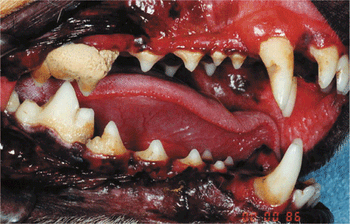
Can you pinpoint the problem?
Mary L. Berg, BS, RVT, RLATG, VTS(Dentistry) is a Charter member of the Academy of Veterinary Dental Technicians and received her Veterinary Technician Specialty in Dentistry in June 2006. Mary is currently serving as the treasurer of the AVDT and the American Society of Veterinary Dentistry. She is the past president of the KVTA and a member at large of the NAVTA board. Mary worked in research for more than 22 years, specializing in products aimed at improving oral health of companion animals. She was the practice manager and dental technician specialist at Gentle Care Animal Hospital in Lawrence, Kansas, for more than seven years and is currently the president of Beyond the Crown Veterinary Education, a veterinary dental consulting service. She and her husband Doug live on a farm near Lawrence, Kansas, with a menagerie of animals.

Can you pinpoint the problem?
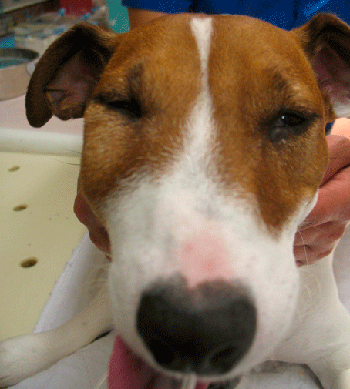
Can you identify these common anomalies?
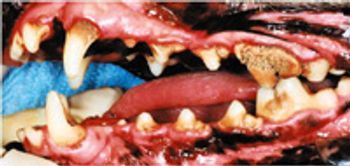
Make sure you collect-and record-all the important information during this exam, so the veterinarian can make the correct diagnosis and provide the best therapy.

Oral disease is one of the most prevalent diseases in dogs and cats. 80% of adult dogs and 70% of adult cats have some form of oral disease. Dental problems are among the top three pet owners concerns in dogs and cats. Calculus and gingivitis are the most common conditions diagnosed by veterinarians in all ages of animals.
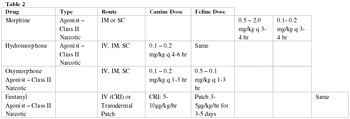
Pain management is more than the latest popular terminology. It is an important part of veterinary dentistry. Many of the procedures performed on animals are painful and it is our duty as technicians to ensure that our patients are as comfortable as possible. The deliver of local nerve blocks prior to performing many dental procedures or oral surgery is a great way to create preemptive analgesia. This can often be incorporated into a multimodal plan for pain control.
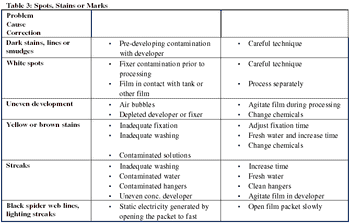
Dental radiographs are in essential part of the oral exam. The crown is just the tip of the iceberg. Approximately 42% of dental pathology is found subgingivally. Radiographs will help diagnose pathology that is not visible from the surface, confirm suspect pathology as well as help demonstrate the pathology to the client. Survey radiographs can also increase your clinic's revenue.

It is important to be able to identify oral pathology and anomalies. It is equally important to correctly record the pathology on dental charts. A thorough dental examination includes both conscious and anesthetized examinations as well as charting disease processes, pathology and anomalies, and treatment plans.

Performing a complete dental prophylaxis entails much more than removing plaque and calculus from the teeth. A thorough dental prophylaxis consists of educating the client, an oral examination, charting disease process, pathology and anomalies, radiographs, both supra and sub-gingival plaque and calculus removal, hand scaling, polishing, irrigation and home care instructions.

The indices most commonly evaluated are gingivitis, probe depth, gingival recession, furcation involvement, mobility and periodontal attachment. These indices are the factors along with radiographs that are involved in grading periodontal disease.
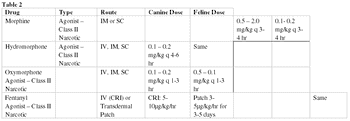
Pain management is more than the latest popular terminology. It is an important part of veterinary dentistry. Many of the procedures performed on animals are painful and it is our duty as technicians to ensure that our patients are as comfortable as possible. The deliver of local nerve blocks prior to performing many dental procedures or oral surgery is a great way to create preemptive analgesia. This can often be incorporated into a multimodal plan for pain control.

It is important to be able to identify oral pathology and anomalies. It is equally important to correctly record the pathology on dental charts. A thorough dental examination includes both conscious and anesthetized examinations as well as charting disease processes, pathology and anomalies, and treatment plans.
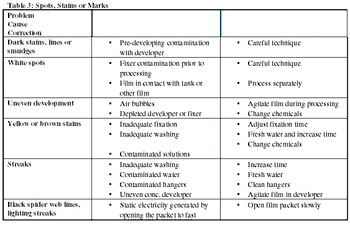
Dental radiographs are in essential part of the oral exam. The crown is just the tip of the iceberg. Approximately 42% of dental pathology is found subgingivally. Radiographs will help diagnose pathology that is not visible from the surface, confirm suspect pathology as well as help demonstrate the pathology to the client.

Oral disease is one of the most prevalent diseases in dogs and cats. 80% of adult dogs and 70% of adult cats have some form of oral disease. Dental problems are among the top three pet owners concerns in dogs and cats.

Performing a complete dental prophylaxis entails much more than removing plaque and calculus from the teeth. A thorough dental prophylaxis consists of educating the client, an oral examination, charting disease process, pathology and anomalies, radiographs, both supra and sub-gingival plaque and calculus removal, hand scaling, polishing, irrigation and home care instructions.

In the previous lecture, the importance of being able to identify periodontal indices was discussed as well as the importance of correctly recording that pathology on dental charts. The indices most commonly evaluated are gingivitis, probe depth, gingival recession, furcation involvement, mobility and periodontal attachment.

Q I'm a technician, and I often suggest dental care for pets. But not everyone sees the value. How do I get the rest of my team on board with dental care?